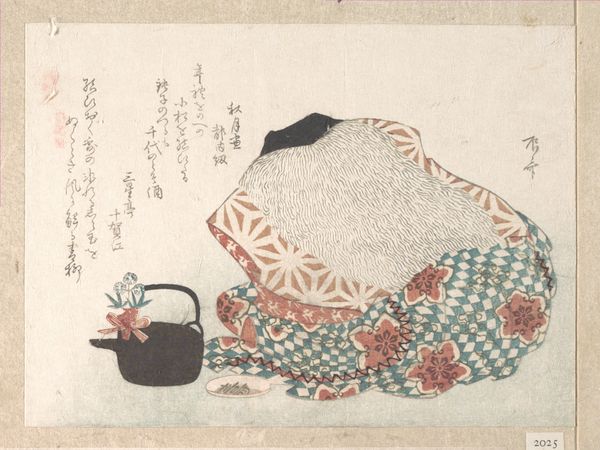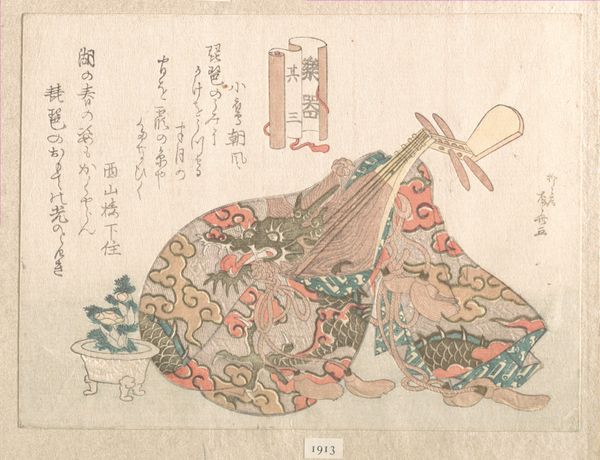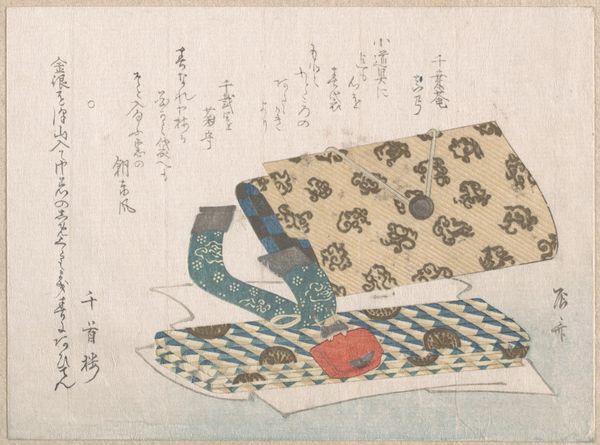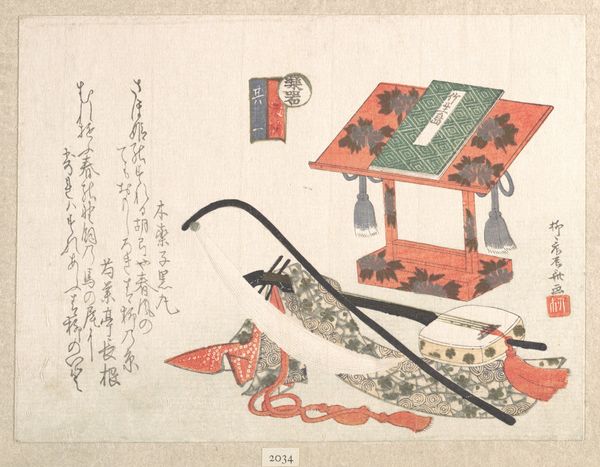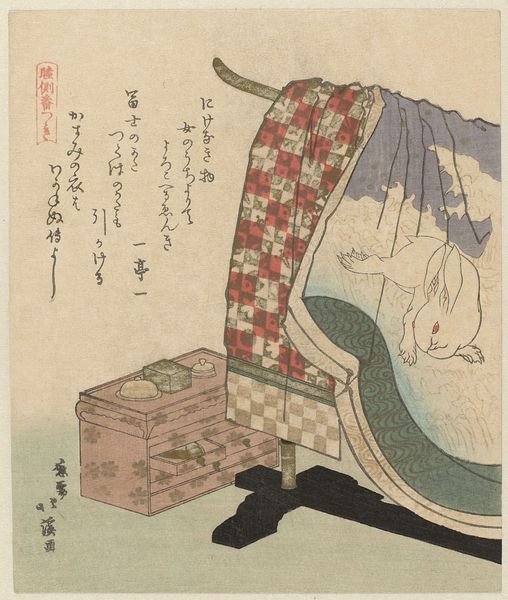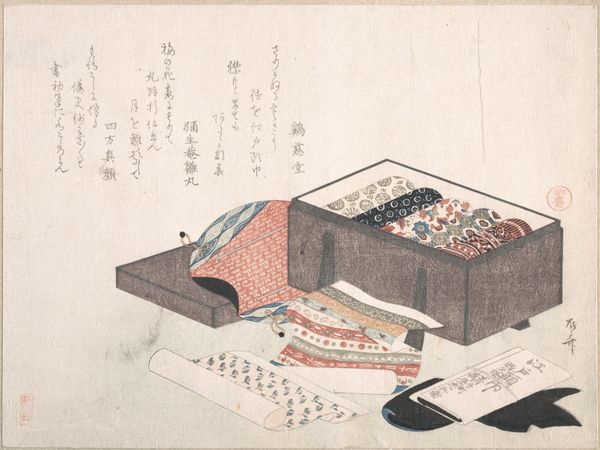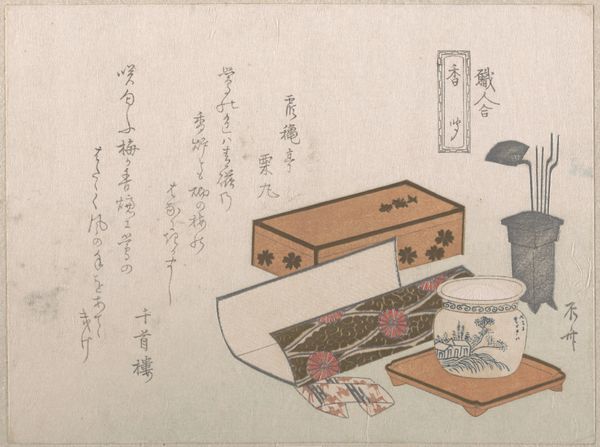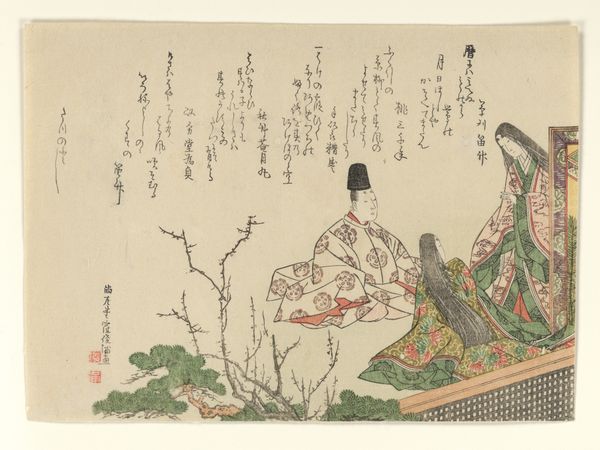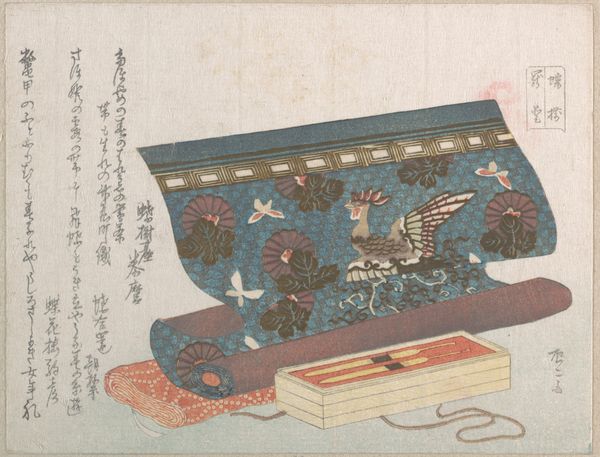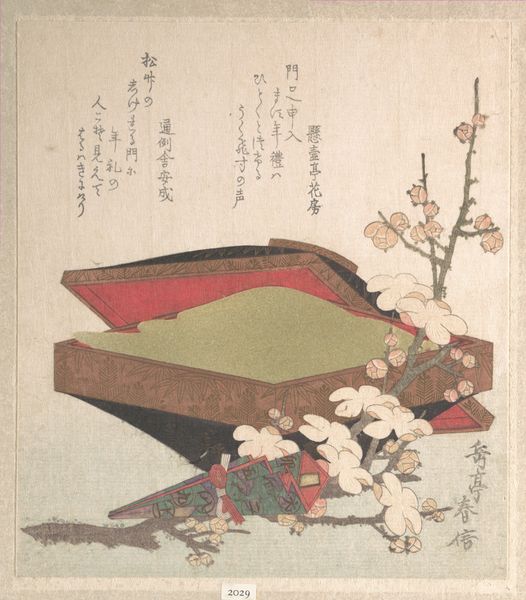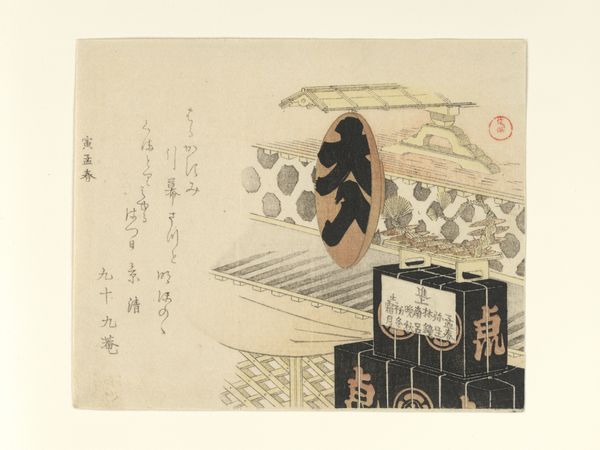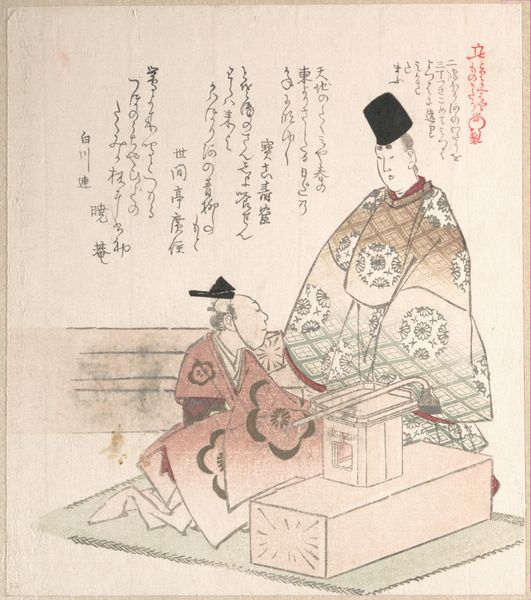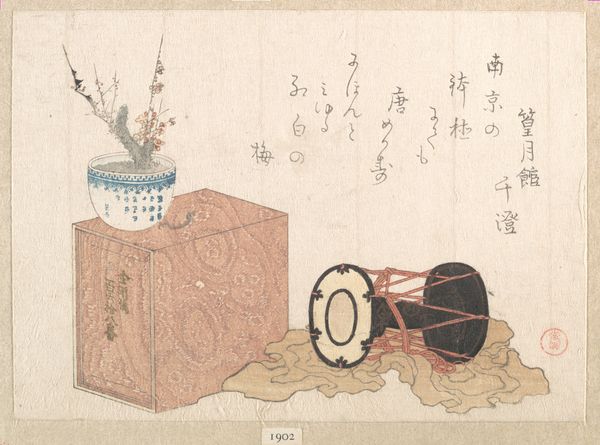
print, woodblock-print
# print
#
asian-art
#
ukiyo-e
#
woodblock-print
Dimensions: 5 5/8 x 7 7/16 in. (14.3 x 18.9 cm)
Copyright: Public Domain
Curator: Ryūryūkyo Shinsai's "Lady's Work-Box and Bed Clothing," created around 1816, presents a curious assembly of objects rendered in woodblock print. The patterns throughout demand attention. Editor: Yes, it's intriguing, and somewhat enigmatic. My initial reaction centers on the contrasts. The geometry of the box set against the organic, almost collapsing form of the garments—it’s a study in textures, isn't it? Curator: Precisely. The severe lines and intricate faux bois of the box's exterior serve to highlight the soft drapery, doesn't it? The artist masterfully manipulates positive and negative space within this confined frame. The dark garments seem to spill from the box, a formal disruption perhaps suggesting the contents exceed the container. Editor: I see those clothes as holding their own narrative weight— the robes imply a story about the woman they belong to and how her absence fills this space. The scissors too - implements suggesting specific duties; a woman of leisure, occupied with elaborate needlework or other domestic crafts. I'd read her social class right into these clues, how is she situated within ukiyo-e society? Curator: Her placement is implied, certainly, though obscured, as she is neither courtesan nor celebrated beauty. Perhaps this domestic scene serves to locate an idealized archetype in ukiyo-e – elevated but relatable. The garments could, formally, signify her potential for fluidity, her mutable identity within defined roles, mirroring the patterned complexity of the work-box itself. Editor: What about the inscriptions? Can these symbols direct the viewers interpretations of her presence in society through poems and cultural expressions. Can such an individual hold certain cultural powers in that context? Curator: Indeed. The inclusion of the text complicates, or perhaps elevates, the whole composition. It invites a participation beyond visual apprehension, positioning the aesthetic experience inside the intellectual pursuits of the era, creating formal play and, ultimately, deeper meaning in simplicity. Editor: A fitting conclusion. Ultimately, the image invites viewers into this rich period for an era marked with intricate symbolic values and subtle but effective visual elements.
Comments
No comments
Be the first to comment and join the conversation on the ultimate creative platform.

